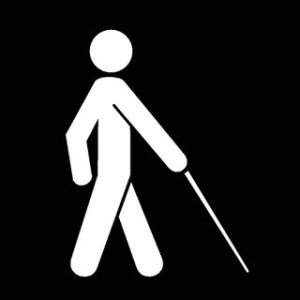 What’s that you say? You have a hitch in your swing? You had a bit of a slice today? You were pushing your putts a little left? A little trouble with your course management out there? Wow, I guess you had it tough! Well, awwww…boo-hoo for you. Here, let me get you a little hankie.
What’s that you say? You have a hitch in your swing? You had a bit of a slice today? You were pushing your putts a little left? A little trouble with your course management out there? Wow, I guess you had it tough! Well, awwww…boo-hoo for you. Here, let me get you a little hankie.
Maybe you should make an appointment with your pro. Maybe you should stand off to the side for a little while, swinging a club by yourself, and see if that helps at all. Why not try talking to one of your buddies at the club and see if he notices something wrong? After all, so many of you expect perfection out of yourselves, right? It couldn’t possibly be that you’re just not that great a golfer, could it? No….you could be on the PGA Tour if you just had some more time to practice, right? Here’s a better idea – why don’t you just shutup about it and be happy you have the ability to get out there and play the game to begin with.
Think you’ve got problems out there on the course? Try playing with your eyes closed and see how well you do then. Sound a bit ridiculous? Well, not to Jan Dinsdale it doesn’t. Jan Dinsdale, a non-golfer at the time, lost her vision at the age of 40. Three years later, through the help of the International Blind Golf Association, she took up golf. She has since ranked as high as #3 in the world on tour and even has two holes-in-one to her credit! Two! Most people with perfect or near-perfect vision never get one. She’s blind and has two!! But without the IBGA, none of this would have been possible.
The IBGA came to be in 1998 and now has fifteen countries (including the U.S.) participating. Just about every rule in standard golf applies to blind golf. Blind golfers however play with a guide. The guide gives them information on the hole as far as distance, hazards and just about anything the rest of us would be able to see for ourselves. The shot is then up to the golfer themselves. Imagine being blindfolded and your partner just describing the hole to you. Good luck!
Although the IBGA was only formed in 1998, according to their website, the sport can actually be traced back to 1924 when a man named Clint Russell lost his sight as the unfortunate result of an accident. The following year, Russell took up golf. Similar to Dinsdale, Russell also had success – in 1930 he shot an 84 for 18 holes despite his inability to actually see the course on which he was playing. Note – 75% of golfers (including myself) cannot break 90. Completely blind, Clint Russell shot 84.
The success of Dinsdale, Russell and every golfer who plays this game despite a disability, is a tribute to their drive, motivation and dedication to the game. They work hard, and despite an almost insurmountable disadvantage, they have succeeded. And thanks to a great organization like the IBGA, they are given a stage on which to showcase their incredible talent.
So the next time your drive lands in a spot leaving you in a position in which you can’t see the green…keep these people in mind. You can’t see the green? They just plain can’t see. Something tells me they’re not feeling so bad for you.